Roadmap to net-zero
Interview with Mark Selby, founder, chair and CEO of Canada Nickel
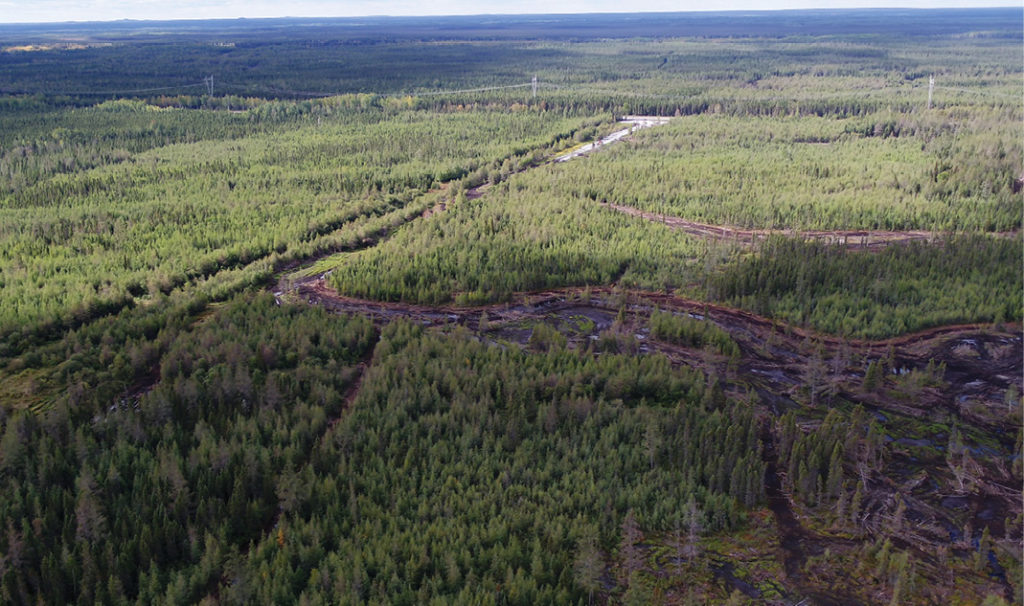
Canada Nickel is developing the next generation of high-quality, high-potential nickel-cobalt projects to deliver the metals needed to power the electric vehicle revolution and feed the growing stainless-steel market. The company possesses industry leading nickel expertise and is focused on low-risk well-established mining jurisdictions. Currently, Canada Nickel is advancing the new Crawford nickel-cobalt sulphide discovery with large scale potential located in the established Timmins mining camp adjacent to major infrastructure. The company owns 100% of Crawford project.
Recently, Canada Nickel launched its wholly owned NetZero Metals to develop zero-carbon production of nickel, cobalt, and iron and applied for the trademarks NetZero Nickel, NetZero Cobalt, and NetZero Iron across several jurisdictions.
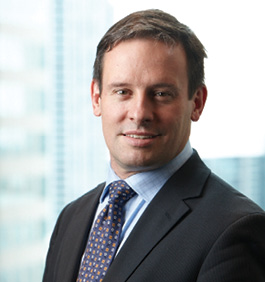
Crawford is expected to be one of the largest base metal mines in Canada based on PEA results. A few weeks ago, I met virtually with Mark Selby (MS), founder, chair, and CEO of Canada Nickel to discuss these technologies.
Since 2001, Selby has been recognized as one of the leading authorities on the nickel market. He graduated from Queen’s University with a Bachelor of Commerce (Honours) and has also served on the boards of multiple junior mining companies.
CMJ: To start the conversation, can you tell us your story with Canada Nickel and how you joined the company?
MS: I worked outside mining for almost a decade, then I joined Inco in 2001 as head of commodity research. I have been following nickel as a commodity for more than 20 years. I was head of strategy in 2005 when we tried to merge Inco and Falconbridge, which unfortunately failed, and I left shortly after that because it was clear all decision making was going to be made in Brazil and not in Toronto anymore.
I worked for Quadra Mining for a few years, and then I joined some of my colleagues at a company called Royal Nickel Corp. (now Karora Resources) where I led a team that successfully raised over $100 million and advanced the Dumont nickel-cobalt project from initial resource to a fully permitted, construction ready project. I was there for about nine years. When I left Royal Nickel in July 2019, I got a call from friends claiming they drilled four holes into this place north of Timmins, and they think they made an interesting nickel discovery.
They asked me to join them, and we formed the company. In September 2019, we started drilling the first hole as Canada Nickel. We are closing into three years as a company. And in the meantime, we are on track for completing a feasibility study by year end, and we think we are going to be one of the biggest low-carbon nickel operations globally because of the scale of the nickel resource we have drilled off and the inherent quality of the ultramafic serpentine rocks at Crawford which naturally absorb and sequester carbon (exposing the serpentine rock to air allows this material to absorb CO2 through natural mineral carbonation). Many people talk about zero carbon operations, but in a place like Timmins Ont., where you have access to low-carbon electricity, and significant infrastructure, we think we can deliver NetZero Nickel, NetZero Cobalt, and NetZero Iron from the deposit.
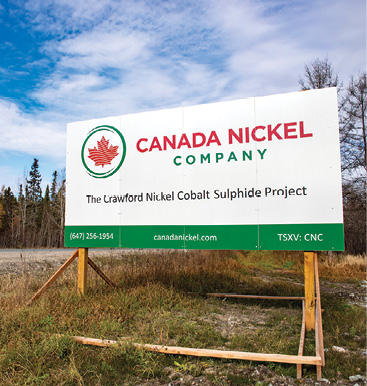
CMJ: Canada Nickel is testing accelerated carbon capture at Crawford, called in-process tailings (IPT) carbonization. Can you explain how it works? Crawford has been called a “net generator of carbon credits”. How does this work?
MS: First, some background on how many companies have approached carbon sequestration. The process that takes place by the ultramafic serpentine rocks is a geological process. In rock in situ, it happens over very long periods of time, and because of that, companies generally looked at what is going to be around for a long period of time: tailings after storing them in the tailings’ facility. So, all the work that we were doing was based on looking at carbon capture in tailings facility after the tailings have been deposited.
We could get to net-zero just with that process, but it takes months and years, so we are trying to find ways to get more air exposed to the tailings because the challenge with picking up CO2 is that the CO2 content of the air is only 400 ppm, i.e., it takes a lot of air and a lot of interaction with rock.
Lab scale tests with our IPT carbonation approach achieved net-zero carbon capture target in < 36 hours and gross carbon capture rates of 26+ tonnes of CO2 per tonne of nickel (5 times necessary for net-zero metal production) in just 6 days (by injecting the tailings with CO2 as they come out of the flotation circuit, and then just letting them sit). IPT carbonation is 8 to 12 times faster than passive approaches, could generate CO2 credits of 710,000 tonnes per annum, and 18 million tonnes over life-of-mine (based on PEA) if process proven at operating scale.
We think by using the typical mill processes, we will be able to accelerate that carbonation more than what we have already announced. The big thing is to have as a concentrated source of CO2. In today’s market, people are desperate to find a way to absorb CO2. It can come from downstream processing of our own concentrates. It can also come from hydrogen production. Our company’s view is that hydrogen is going to become the fuel for big captive truck fleets. Having hydrogen production where you are cracking methane is going to create a carbon stream, which we can pull into our plant. Another opportunity is to locate other CO2 generating industries like steel and take advantage of the fact that our tailings can scrub it.
There is a potential for Timmins to become a zero-carbon cluster because of this breakthrough.
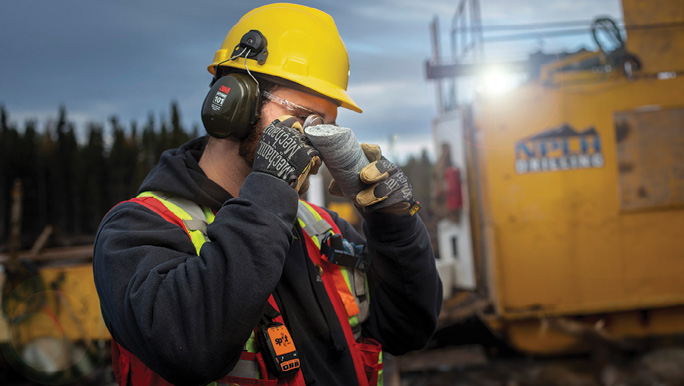
CMJ: An electric mining fleet – electric rope shovels and trolley trucks – will go a long way toward reducing carbon emissions. Have you calculated by how much?
MS: Utilization of electric rope shovels and trolley trucks which utilize electricity rather than diesel fuel as a power source wherever possible. In fact, it eliminated over one-third of the diesel consumed when using a typical standard fleet. With large low-grade deposits, we use a lot of electricity and grinding up the rock, and the fact that Ontario has low-carbon electricity available from the grid is a massive advantage. So, those are the two big levers that allow us, even before accounting for the rocks natural ability to absorb CO2, to design a relatively low-carbon mine. In Canada, because we have B.C., Manitoba, Quebec, Ontario, and Newfoundland with their big hydroelectric facilities, we take for granted that there is low-carbon electricity available. But the reality is about half of the regions in the world that have low-cost or low-carbon power are in Canada. It is a great opportunity if we really choose to harness it and take advantage of it.
CMJ: How far from the hydroelectric grid is the mill?
MS: Milling and large-scale processing of lower grade sulphide ores utilizes a significant amount of electricity, and local proximity to hydroelectricity provides the potential to minimize carbon emissions for this stage of production. The good thing is that it is located literally underneath the infrastructure with multiple power lines running over the property. Unlike some other locations in Canada where you must construct a whole pile of infrastructure to get there, in our case, we need to move some of the infrastructure out of the way. There is a highway in addition to three separate power lines that run over the property or not too far from it.
CMJ: Part of the NetZero aim is to reduce CO2 and SO2 emissions from pyrometallurgical and hydrometallurgical processes when concentrates undergo further processing downstream. If the CO2 is captured by in-process tailings (IPT) carbonatization, will the SO2 be used to produce sulphuric acid or something else?
MS: In the concentrate processing, if we roast the concentrate, we can capture 99.9% of the sulphuric acid. During the pyrometallurgical processes such as roasting, sulphation roasting, and reduction using electric arc furnaces (utilizing natural gas rather than coke or coal as a reductant), the off gases are captured and re-routed to allow the CO2 to be captured by the waste rock and tailings.
Additionally, the hydrometallurgical processes generate minimal off-gases to produce nickel and cobalt products. The off gases will again be captured and treated to ensure CO2 and SO2 emissions are minimized. Our mill flowsheet uses some acid in it, so it would create a nice, closed loop environment.
CMJ: Do the latest results of the IPT tests continue to be promising?
MS: The first test worked out great. We repeated the test in a separate lab under slightly different conditions, and we were able to duplicate the results. We think there is a potential to be able to absorb more carbon faster by pulling a few additional levers which our latest results show 3 times acceleration in carbon capture rates. Exact amount and rate at which CO2 can be absorbed from materials mined at Crawford will be analyzed during upcoming phases of work. It is a real change versus what was done before, and we want to test these additional levers, and after the next phase of testing, we will share it globally, because it is a breakthrough for these deposits that are hosted in the same type of rock. I believe that this class of nickel deposits is going to be the source of low-carbon nickel for the next hundred years.
CMJ: Is NetZero a subsidiary of Canada Nickel or a separate entity?
MS: We created a wholly owned subsidiary, NetZero Metals, to begin the research and development of a processing facility that would be in Timmins, Ont. with the goal of utilizing existing technologies to produce zero-carbon nickel, cobalt, and iron products. We also applied for trademarks for the terms NetZero Nickel, NetZero Cobalt, and NetZero Iron in U.S., Canada, and other jurisdictions related to zero-carbon production of nickel, cobalt, and iron products about 18 months ago. Because we were confident that our IPT approach could get us to net-zero, our view was to have NetZero as a standalone downstream entity. Right now, it is a wholly own subsidiary. We are still looking at options in terms of how we structure NetZero and how we can potentially capitalize on net-zero going forward.
Mining is a very capital-intensive business, and we can create more value for shareholders if we can find ways to reduce our cost to capital.
CMJ: Why did Canada Nickel recently acquire 42 km2 of land near Timmins, Ont., for a “zero-carbon industrial cluster?”
MS: There are so many industries that generate CO2, but there are not many companies that can capture it at a high rate in large volumes. That is the real opportunity, and we have 42 km2 of ultramafic rock that we are going to be drilling over the next few years.
From day one when we started the company, we realized that these types of deposits can be identified using geophysics. Steve Balch, our vice-president of exploration, and I started to look around Timmins to see if we can identify any other ultramafic rock deposits. Using the provincial geophysical data, we zeroed in on a certain range. We have over a billion tonnes of resources in less than a square kilometer of surface footprint, and we now have additional 42 km2 of footprint, which really speaks to the potential for a very large volume of material.
CMJ: How is Canada Nickel planning to involve the local community? How are you going to benefit from the skill sets of the population in this area of northern Ontario, including First Nations?
MS: The area has a rich mining history and skilled, local workforce and proximity to contractors. There are 80,000 people in Timmins, Cochrane, Smooth Rock Falls, and Iroquois Falls and surrounding communities. There is a real opportunity here in Ontario to create zero-carbon industrial cluster.
Very early on, we started working with all the local communities and local First Nations to get them engaged, involved, and feel ownership in the project as it moves forward. Canada Nickel aims to sustainably produce the critical minerals needed for a low-carbon future, so we are committed to operating in ways that support resilient local communities and minimize our environmental impacts.
We are also committed to early, ongoing, and accessible engagement that is specifically tailored to the interests and expectations of all project stakeholders, communities, and Indigenous groups. We intend to respond to community concerns, honestly and transparently, while working to directly optimize potential benefits of our projects. Ongoing dialogue is a key component in ensuring that the Crawford project is constructed in a way that positively contributes to the future successes of its neighbouring communities. Our team will maintain, and seek to continuously improve, ongoing information and participation tools and activities aimed at supporting constructive collaboration throughout the life of the Crawford project. That will certainly pay off in three to five years.
We work to maintain strong communication and collaboration with Indigenous communities and organizations to establish a mutually beneficial and productive relationship characterized by transparent information sharing, tailored engagement, and long-term partnerships.
We can maintain this relationship with continuous activities and information sharing, such as communication channels (newsletters, email and telephone correspondence, and site visits); involving Indigenous communities, organizations, and companies in project assessments and operations; and finally incorporating the use of Indigenous knowledge in impact assessment (IA) documentation and project planning.
Canada Nickel is always present at community gatherings to answer questions, hear concerns, and discuss the future of the Crawford project with all community members, and we will continue to engage with Indigenous communities and organizations to ensure that the Crawford project is designed and operated in way that respects their rights, experiences, and connection to their traditional lands.
Finally, we are on track to deliver the feasibility study for Crawford by year-end. The study work is approximately 90% complete, and we are confident in its outcome.



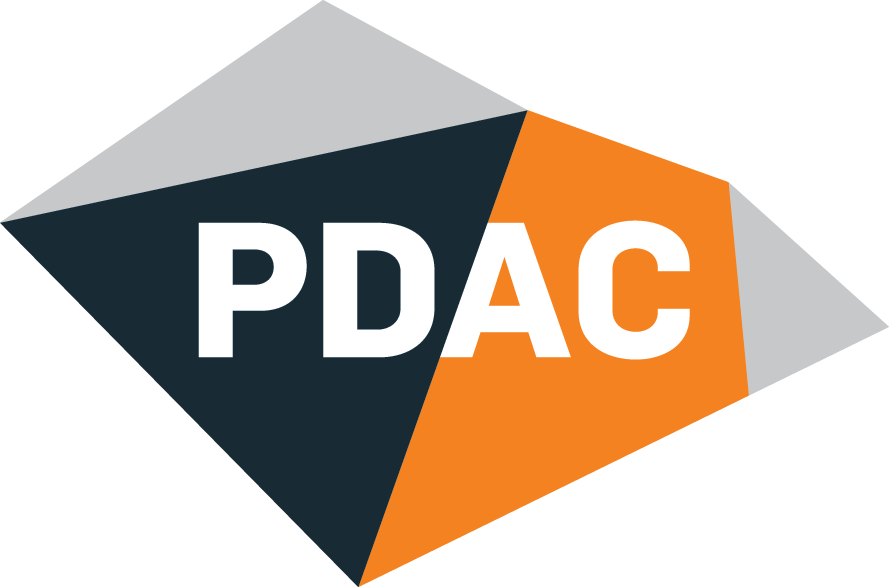

Comments